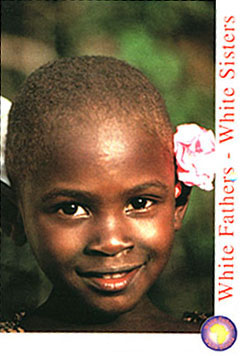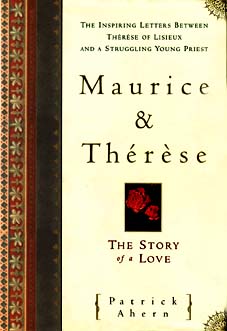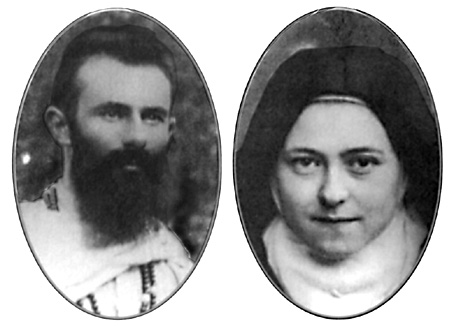PUBLICATIONS
Page 2
Click
on the item of interest to you :
1. "History of
The Priory Bishop's Waltham" by Peter Finn
 This
excellent book tells the story of The Priory from the laying of the foundation
stone in 1864 to its replacement by a Catholic church, a park and housing in the
1990s.
This
excellent book tells the story of The Priory from the laying of the foundation
stone in 1864 to its replacement by a Catholic church, a park and housing in the
1990s.
It relates, in particular, the story of the Apostolic School of the White Fathers:
its origins as a school for Arab boys in Algeria, why it came to Bishop's Waltham
via France, the hardy life of the pupils, expulsions, boys arrested as spies,
a former pupil condemned to death, digging air-raid trenches, boys permitted to
smoke, the rogue impersonating a White Father. Interesting and little known facts
abound throughout, in fact.
The appendices list every pupil, every member of staff (including lay teachers),
the superiors, and the domestic staff. There is information on the political background
to the exile in Britain, on the St Laurent d'Olt seminary of which the Priory
was for some years the senior section, and on the great Cardinal Lavigerie.
The story of the school is interwoven with local events that directly affected
it: the royal opening of the building as an infirmary and why it never had a patient,
the beer riots, the Battle of Bunkers Hill, the Priory Barracks, Zeppelins, flying
bombs, the police training school, the establishment of a parish by the White
Fathers, and much more.
The book is hardback bound, has 308 pages, 51 illustrations, extensive notes and
an index.
Available in limited numbers from the publisher, Hedera Books, at the special
price of ?12.90 (incl. UK p&p) for members & associates of The Pelicans
(Overseas orders will require a contribution to parcel postage)
Also available from booksellers at ?15.99. Write to:
Hedera Books, Alderbrook,
Springvale Road, Winchester SO23 7LF
tel: 01962) 885 266
email :peterfinn@hworthy.wanadoo.co.uk
Note: All cheques should
be made payable to Hedera Books
and orders to include the name, address & phone no. of the purchaser
Return to Top
2.
The White Fathers & their Missions by Fr
Joseph Bouniol
2. Transcribed on
to CD and arranged by Robbie Dempsey
Robbie has done an oustanding job for us all here by reproducing
this substantial history by Fr Bouniol.
The disk contains a reproduction of the entire book— nearly 400pages of
text, photographs and illustrations—which was originally published in 1929
by Sands & Co (Covent Garden).
The scope of the book is very comprehensive:
Part 1—
The Foundation and early history of the Society
Part 2— A
Description of the White Fathers' Society
Part 3— The Principal features of the
missionary work of
Part 3— the
White Fathers' Society
Part 4— The White Fathers' Missions
Part 5— The
Society in Europe and America
Included on the disk is a small piece of 'page turning'
software which makes for perfectly convenient and comfortable viewing of the
pages.
In reviewing Robbie's work, Michael Gallagher
says: "The CD is excellent . . . interesting stuff which I am sure
would interest the Pelicans . . .Those early WFs had a faith and dedication
that certainly gives cause for admiration."?/i>
Robbie will give you a free copy if you want one—though he would like to
use it to raise funds for Africa.
He's done an excellent job for us. Why not make him
an offer which he can't refuse ? Just
send a ONE LINE EMAIL requesting the CD, along with your postal address,
to: rdempsey@tcd.ie
Robbie writes: "I
would like the benefactor of this CD to be a certain Pere Valentijn,
Diocese de Kasongo East Congo (DRC)
Fr. Valentijn de Belie (a Belgian WF) had to flee the anti-government
rebels in the Congo
in 1998 and broke his leg in flight. He stayed in London for a while but
has since gone
back to his mission station.
• Read more about this in the APPEALS section.
Robbie's postscript:
" This
current electronic version of Pere Bouniol's work is dedicated to the memory
of Fr. Stan Lea W.F.
He was both a student (under Fr. Bouniol) and twice Father Superior at the Priory,
in Bishop's Waltham, Hampshire.
He took a long detour from Kampala in Uganda, and was asked to close down the
Priory. That happened in 1967 when
many students, including myself, were under his care.
I have not forgotten him. I recall vividly his arranging for me to make my first
visit to, of all places, the Tate Gallery. That was to see an exhibition in
1966 of the unique and religious artist, the French expressionist Georges Rouault.
Fr. Stan knew a thing or two, especially that the world at its worst needs Christians
at their best".
To request the CD just send a ONE
LINE EMAIL, along with your postal address, to: rdempsey@tcd.ie
Return to Top
3. The
White Fathers - White Sisters Magazine
 This
is produced bi-monthly and contains information on current events and issues
in Africa, including well-researched background information and reports from
missionaries in the field. In addition, there is a section entitled ‘Home
and Away’ (!) which reports on the arrivals and departures of our missionaries.
This
is produced bi-monthly and contains information on current events and issues
in Africa, including well-researched background information and reports from
missionaries in the field. In addition, there is a section entitled ‘Home
and Away’ (!) which reports on the arrivals and departures of our missionaries.
As is to be expected, obituaries feature in most issues, along with a list of
readers, friends and associates who have recently died.
It’s an excellent production - beautifully presented, very readable and,
without doubt, it presents the work of the Society to the world in a highly
professional manner.
Various articles reproduced in this web-site appear by kind permission of The
Editor, for which we are most grateful. The magazine is issued free, but
contributions (of any size) are most welcome.
For those of you who aren’t aware of this excellent publication, you can
get on the mailing list by contacting:
Fr Bill Turnbull WF
The Editor
The White Fathers
129 Lichfield Road
Sutton Coldfield
West Midlands
England
B74 2SA
email: suttonlink@dial.pipex.com
Reminder: The Society’s official web-site is: www.the whitefathers.org.uk
Return
to Top
4.
A History of
THE WHITE FATHERS IN SCOTLAND
aa attributed
to Father Leonard Marchant WF
• We are grateful
to Chris
Benton for making this publication available to us.
This 18,000 word document can be read or downloaded by going to Page 11 of
the HISTORIES section.
When time allows, a review of this history will be displayed here and the text
will be illustrated and
re-formatted to make it more accessible to modern readers.
"Contains a lot of interesting, anecdotal history, and certainly worth
the reader's time, even when it meanders on occasion."
(Click Here to to go straight
to it)
or Return
to Top
5.
The White Fathers (Missionaries of Africa) by
Donald Attwater
Donal Attwater's 6,500 word chronicle appeared in a special edition of "The
White Fathers" magazine — probably published in 1952, the latest date
that is mentioned in the text. It is therefore about 50 years old and although
it is interesting to read at various levels, it should primarily be seen as
an historical document. Quite naturally, it reflects the language and attitudes
of its time and readers should not be offended if they come across statements
and opinions which would be frowned upon today. Many of us will have read such
material when we were young and would have been inspired by such accounts of
heroic lives to join the White Fathers. Some of us are just as inspired by the
story as we read it today and can relate it to the way in which the Society
has adapted and developed.
• The text of Donald's Attwater's publication
can be read / downloaded by going to Page 20 of the HISTORIES section.
(Click Here to go straight to it )
or Return to Top
6.
A Biography of BISHOP FRANCIS WALSH, WHITE FATHER 1901- 1974
wwWe are grateful to John Morton
for making this publication available to us.
This 8,500 word document
can be read or downloaded by going to Page 10 of the HISTORIES section.
When time allows, the text will be illustrated with photographs and re-formatted
to make it more accessible to modern readers.
To many of us who knew him, Father (Bishop) Walsh was something of a hero and
this story of his life, with all its highs and
lows, is inspiring to read about— and very humbling, too.
(Click
Here to go straight to it)
or Return to Top
7.
"A School for Apostles" a study by Maurice Billingsley
When Maurice was an undergraduate at Christ Church College in Canterbury, he
chose to focus on The Priory as the subject of one of his coursework assignments
— partly, he now feels, to get back in touch with that part of his early
life and also, no doubt, to try to understand the forces at work that had such
a dramatic impact on the lives of both staff and students in those closing days
at Bishop's Waltham.
These were traumatic, unsettling times for all concerned, and Maurice's cohort
were directly involved in the changes that took place. He and his contemporaries
were the final batch of students to reside at The Priory. It closed its doors
in 1967, the year that Maurice finished his A levels and others had completed
their GCE 'O' Level programmes. By the time that he headed off to the College
of Philosophy at Blacklion, the place was already being made ready for sale.
"A School for Apostles", written in 1989, is a highly readable and
authoritative piece of work — thoroughly researched (with over 100 references
identified) but also a well-paced chronicle of 50+ years of history of the White
Father's at The Priory. Maurice's study traces the exodus from France, the establishing
of roots near the south coast of England and the gradual build-up of the White
Father presence in the UK. It describes the similar approach to formation taken
by other missionary orders and their diocesan counterparts (along with the inevitable
competition for young hearts and minds) and identifies the social changes that
eventually forced the White Fathers and other orders to completely re-think
the way in which they would nurture potential vocations and training for the
priesthood.
I think you will agree that the author deserves an alpha-plus for his
efforts !
Read the document on-line or make a print-out. (8,000 words, plus references
and sources)
|
Click
Here to go straight to it
(Page 28 of the HISTORIES section)
Note: This electronic
version has kept faithfully to the original text but includes slight changes
to the illustrations offered.
|
Return
to Top
8.
"Planting the faith in darkest Africa" by E.A. FORBES
 Description
to follow shortly.
Description
to follow shortly.
|
Click
Here to go straight to it
(Page 29 of the HISTORIES section)
Note:
• This electronic version has kept faithfully
to the original text
but several extra illustrations/maps have been added.
• To ease downloading time, each of the
6 chapters (and Appendix)
has been recorded on a separate web page.
|
Return
to Top
9.
"Leaves from a White Father's Diary by Fr A E Howell WF
|
 Fr
Howell spent 4 years visiting and working in Equatorial Africa, returning
with a heavy heart to the UK just as World War Two was about to break
out. Fr
Howell spent 4 years visiting and working in Equatorial Africa, returning
with a heavy heart to the UK just as World War Two was about to break
out.
These extracts from his Diary describe the missions that he visited and
the dedicated priests, Brothers and Sisters who ran them. His travels
covered thousands of dusty, often dangerous, miles overland through Uganda,
Rwanda, Burundi and Tanganyika (as it was).
"Leaves" is a colourful illustration of those days in far-flung
outstations of the Church in Africa. It chronicles some of the sacrifice
and hardship that his colleagues endured — which is described throughout
with unfailing admiration.
The author develops an immediate and deeply-felt affection for the Africans
that he meets and witnesses for himself the astonishing mass-conversions
of the time. (Re-told and confirmed in the Appendix). The climate soon
takes its toll on Fr Howell, however, and he finds the lifestyle very
tough at times. Even so, we hear little complaint of his discomfort, and
the sketchy account of his own aches, pains and illness help us to understand
a little of the daily challenge that the missionaries faced.
This is an
uplifting text, written with a light touch and an engaging enthusiasm
that continues to charm.
A Short Review is provided below or Click
Here to go straight to the text (Page 36 of the HISTORIES section)
Note:
• This electronic version has kept
faithfully to the original text but several extra illustrations /
maps have been added.
• To ease downloading time, each of
the 15 chapters (and Appendix) has been recorded on a separate web
page. |
|
|
A
Short Review
According to
one account, the author was the parish priest at Heston (Middlesex)
from 1931 to September 1935.
This surely can't be right : the first extract from Fr Howell's
diary is dated 14th October 1934, where he is on board ship
in the harbour off Mombassa.
It could be, of course, that the first year of this sojourn
in Africa started out as some sort of sabbatical. Indeed, in the
early days of this venture he seems to be very much the visitor-cum-tourist
. His short Introduction (which I didn't discover until I had actually
finished the book!) clarifies the situation for us however :
"I lived in Equatorial Africa from October
1934 to October 1938. For one year I was more or less (rather less)
an ordinary missionary ; for two and a half years I was a teacher
of theology and other things . . . . and for about six months I
was a traveller."
I must say that I was surprised to learn that Fr Howell actually
worked in the various missions he visited because there is
little hint of this in the text. Initially, one gets the impression
that he must have been enjoying some leisurely (but long) fact-finding
tour, sending back reports to the powers-that-be whilst his missionary
colleagues worked long and hard in the vineyard.
During the four-year period he covers thousands of miles overland
through four countries : Uganda, Rwanda, Burundi and Tanganyika.
Mostly, this journey is exhausting, uncomfortable and not without
risk to life and limb. But to compensate for any hardships there
is always a huge welcome when he arrives at the next mission on
his agenda. His hosts are always hungry for news of the old country,
of course, and many times he meets up again with long-lost friends
from the UK. The hospitality is always generous, though on occasion,
one suspects, even leaner times are in store for the residents once
this visitor leaves.
In fact the more sceptical reader might think that these men also
suspect that he is some sort of covert inspector — and the
reason that everyone is so eager to ensure that he is suitably impressed
with the progress being made at each mission and that he returns
to his masters ready to fight their case for much urgently needed
funds and personnel.
Perhaps he always made a point of announcing that he was writing
a book about his experiences, so that everyone was on their best
behaviour and made sure that his visit was a pleasant one !
As you get into the book, however, it becomes plain that Fr Howell
is by nature a self-effacing individual ; his own contribution during
that period and any ill health that he, too, might have suffered,
is given scant treatment. This is a warm and sensitive human being
who focuses only on the monumental achievements and dedication of
his fellow priests, Brothers and Sisters.
His
deep affection for Africa and Africans is also self-evident. Typically,
as he sets off from one mission to the next (as he does so many
times in those four years) there is always sadness in his heart
for the many friends in the community he has just left behind. No
doubt the feelings were mutual.
Here is a diary that was published just as World War 2 broke out
— nearly 70 years ago, in fact — but it is written with
such enthusiasm, compassion and optimism that it cuts through the
decades and challenges any gratuitous opinions that we might harbour
today about the best of what was achieved in those early 'colonialist'
days.
However it strikes you, there's no denying that this is a compelling
read.
Return
to Top
|
|
|
8.
"Maurice & Thérese, The Story of a Love" by Patrick
Ahern
 
This
is the story of the little-known relationship between a young, aspiring,
White Father seminarian—Maurice Belliére, studying
at Sommervieu in the diocese of Bayeux—and the 23-year-old nun, known
to us now as Saint Thérese of Lisieux.
The book contains nearly two dozen letters that they exchanged as she
lay ill and dying in the Carmel.
Maurice, full of anxieties about his vocation to the priesthood, had written
to her Mother Superior for spiritual guidance and Thérese had been
selected to help him.
The author, Bishop Patrick Ahern, a leading expert on Thérese,
takes each letter in turn and adds his own insights and commentary.
All of the following is taken from the book's jacket :
"As
Saint Thérese lay dying in the Carmel of Lisieux, she overheard
a conversation that amused her. Outside her window, two nuns were
discussing what they could write in her obituary that might possibly
be of any interest, since the twenty-four-year-old nun had never done
anything worth noting. Thérese was pleased, for she had always
kept a low profile. With the posthumous publication of her spiritual
autobiography in 1898, however, that unknown person would vanish instantly.
She became one of the most beloved saints of all time, and her influence
will expand dramatically because of Pope John Paul's eclaration that
she is a Doctor of the Church.
Amid
growing interest in her writings comes the collected correspondence
between herself and a humble young seminarian, Maurice Belliére.
Though they never met in person, they exchanged twenty-one letters
that open a window on the heart of Saint Thérese—a window
that would have remained foreever closed had Maurice not written to
the Mother Superior at the convent asking for a nun to pray for him.
the Mother Superior chose Thérese, and in these conversational
letters the Little Flower reveals herself in a way that we would never
have know from her autobiography.
In his accompanying text, Bishop Patrick Ahern expertly leads the
reader into the worlds of Maurice and Thérese, and reveals
the full beauty of this saint's spirituality.
|
Patrick Ahern, an auxiliary bishop of New York, is widely regarded
as one of the foremost experts on the spitituality of Saint Thérese
of Lisieux. He lives and works in Manhattan.
The magnificent correspondence between Thérese of Lisieux and a
young struggling priest—and the inspiring story behind the intersection
of two very different lives."
Charles Scribner III : "In his
balanced, insightful narrative, Bishop Ahern avoids the pitfalls of hagiography
: he gives us no plaster saint, but a full-bodied portrait, full of shadows
and light. The reader is left with a sense of the sheer divine mystery
of the love and suffering—in every sense the passion—of
these two young people touched by God. It is a most timely book for a
secular age ; it is also a gift."
Mary Higgins Clark : "A beautiful
and inspiring story—truly a book about a saint for sinners."
John Cardinal O'Connor, Archbishop of New York
: : "A marvellous book. Perhaps I knew St Thérese as a
saint before I read her letters to Maurice and his to her ; I did not
know her as a woman. Now she fasinates me more than ever."
|
"Maurice
& Thérese
The Story Of A Love"
Published
by Doubleday
ISBN -0-385-49261-8
|
Return
to Top
|

 This
excellent book tells the story of The Priory from the laying of the foundation
stone in 1864 to its replacement by a Catholic church, a park and housing in the
1990s.
This
excellent book tells the story of The Priory from the laying of the foundation
stone in 1864 to its replacement by a Catholic church, a park and housing in the
1990s.  This
is produced bi-monthly and contains information on current events and issues
in Africa, including well-researched background information and reports from
missionaries in the field. In addition, there is a section entitled ‘Home
and Away’ (!) which reports on the arrivals and departures of our missionaries.
This
is produced bi-monthly and contains information on current events and issues
in Africa, including well-researched background information and reports from
missionaries in the field. In addition, there is a section entitled ‘Home
and Away’ (!) which reports on the arrivals and departures of our missionaries. Description
to follow shortly.
Description
to follow shortly. Fr
Howell spent 4 years visiting and working in Equatorial Africa, returning
with a heavy heart to the UK just as World War Two was about to break
out.
Fr
Howell spent 4 years visiting and working in Equatorial Africa, returning
with a heavy heart to the UK just as World War Two was about to break
out. 
